
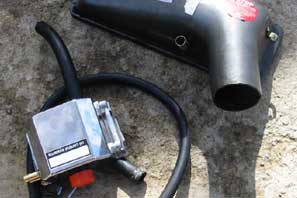
Esprit Oil Catch Tank
High performance engines and race cars are routinely fitted with catch tanks to collect oil mist that is produced by pressurisation of the sump. On the Esprit there is a oil/air separator (Green plastic thing, see below) which is supposed to trap all the oil and feed it back to the sump.
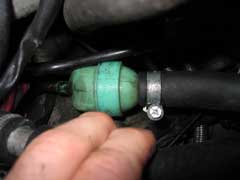
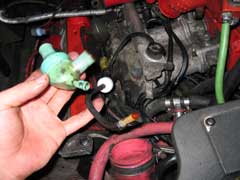
However, it does not work perfectly and the exit of this separator is fed back in to the air box. The result is that oil mist is fed back into the air intake. You will see oil collecting in the the turbo intake trunking if you have a look. If oil mist/vapour is present in the air intake the effect is to dramatically increase the potential for engine knock by lowering the effective octane level of the air/fuel mixture.
If the Knock sensor detects any engine detonation "pinking" then it will retard your ignition timing to prevent further detonation. In extreme conditions it will also limit boost to prevent you blowing up your engine. Oil is not as volatile as petrol and the effect is the explosion that pushes the engines piston down is not as violent which again equals less power. I also think oil mist also increases the Exhaust Gas Temperature (EGT) which is also not good.
Our solution is to fit an oil mist catch pot and blank off the hole in the air box. The catch pot is a nice small (1L) alloy tank, it comes in a range of colours and has a fill indicator and breathable top. This will stop the mist finding it's way back into the engine.
Note:
We have now fitted a crankcase breather
filter and removed the catch tank.
This is another way of doing the same thing, but the oil isn't caught and
will end up escaping into the engine bay and on to the road.
Installation
This is quite a small job with only the positioning of the tank taking time and shouldn't take more than 2 hours.
|
You will need the following parts: Oil
Catch Tank |
You will need the following tools: Drill
and bits |
The cheapest catch tank we could find was £82.24 for alloy r/h exit + £3.80 shipping www.thinkauto.com/acatalog/intro.html
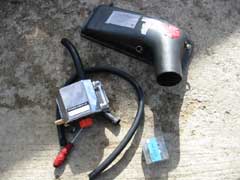
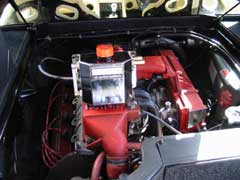
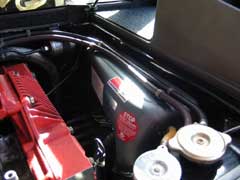
First thing is to decide where to mount the tank. On the SE/S4/S4s engine, there is enough space to mount it on the air box, which is the perfect place as this is where to pipe returns to. We used sticky-back plastic to mount the tank, and then replaced the engine cover to make sure everything fitted properly. This is an important part of the install, as it needs to be mounted securely and safely.
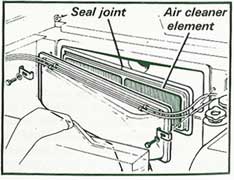
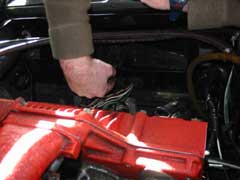
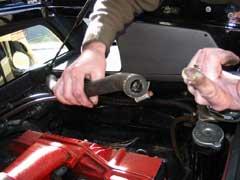
Once the position had been marked out, the air box was removed (see here for full removal guide) . You can see from the picture above that oil was present it both pipes connected to the air box. This is the problem the Tank will cure. Clean out both pipes of oil, the air pipe that feeds air to the turbo needs a full forearm down it, to clean the oil out.
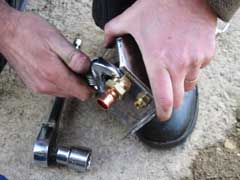
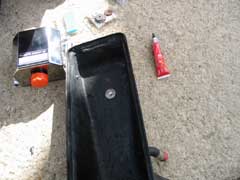
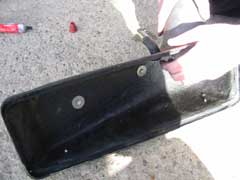
Now to fit the tank to the air box. We used a blanking connection to block off one feed and another connector to feed to the pipe. We then drilled two holes in the air box and then glued in some large washers to help spread the load on the plastic air box.
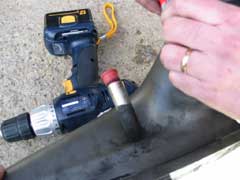
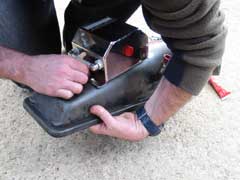
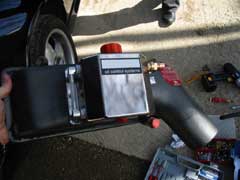
We also glued on a plastic grommet to blank off the original pipe that connected to the air box. This is where the oil mist was returning to the air box and that will now be collected by the catch tank. Then attach the tank to the air box using 2 x nuts and bolts. The tank is now held securely to the the air box.
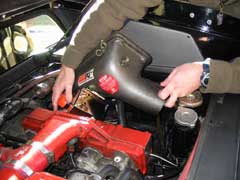
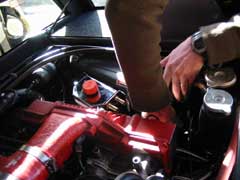
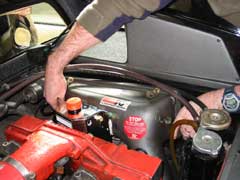
You can now fit the air box / catch tank back into the Esprit. Be careful not to disturb any other leads or pipes when doing this. The tank now sits safe and secure to the air box and doesn't disturb anything else in the engine bay.
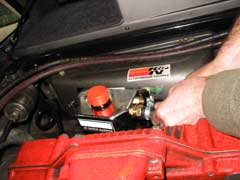
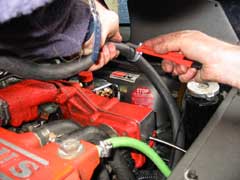
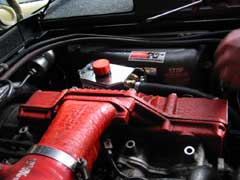
Now using either the old (cleaned) pipe, or a new one if extra length is needed, attach to the catch tank using a jubilee clip. If you're using a new pipe you'll need to disconnect the old one down near the turbo. It's connected with one jubilee clip. Check all connections once the install is finished. You now have an oil mist catch tank fitted to your Esprit. Remember to check every so often, as this tank will need emptying as the oil collects.
Verdict
Fitting the catch tank wasn't very difficult and the install looks good. As for how much oil it collects, that will only be seen in time, although Dermot has seen some oil in his tank already. The fact of the matter is that oil mist was returning to the air box, which if it continues into the mixture would cause pre-detenation, which causes engine wear. This arrangement will stop the oil and make sure only air and fuel enter the engine.
The only thing to consider with this modification is; is around £150 worth removing the chance of oil mist entering the fuel mixture. Personally I think it is, the same as £150 for a dump valve is worth helping to reduce wear of the turbo. It all depends where your priorities lie. Hopefully this guide might change them slightly.
If there is any interest in this Catch Tank Kit, then it can be supplied as a package by Lotus Esprit World. Email for details.
![]()
This mod was performed by Dermot & kato on LEW's 1992 SE
If you have any comments, feel free to e-mail me with at admin@lotusespritworld.com
Users Comments
I've had an oil mist catch tank on my car for a year now, so I thought I'd empty it to see how much it had caught. I've attached a pic of the contents. The diameter of the jar is 80mm, the height of the liquid is 50mm therefore using 22/7*r squared*h - I worked out that it had caught 251ML of fluid (roughly).
This would have gone back to the airbox then down the trunking to the turbo, then to the carbs. When I fitted the catch tank, I cleaned out the airbox and trunking which were filthy with oil. Now, a year later they are still clean as a whistle - so the catch tank is doing its job.
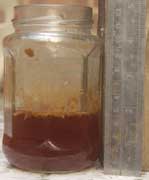
Alan Paterson
(June
05)
Users Comments
OIL SEPARATOR CYCLONE
After reading your articles re the crank case breather/filter or the catch pot, perhaps you would like to read my solution to this problem, as in the previouse article I blanked off the air filter housing oil inlet and installed the cyclone onto the filter housing body, reconnected the breather pipe onto the cyclone inlet, then mounted the small filter to the top of the cyclone. The theory behind the use of a cyclone is as the oily air enters the cyclone the spinning action creates a centrifugal force, oil being heavier than air is forced to the wall of the cyclone and drops to the bottom of the cyclone, the remaining air is vented through the filter, the oil can be drained out when necessary, in my experience draining is only required every 1000 miles, however this period will vary depending on engine condition and state of tune, my cyclone has been fitted for some time now and works perfectly, the engine in my Esprit is at near maximum performance possible without damaging the drive train, basic 280BHP engines may require less draining.
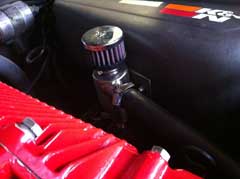
Mick Rainbird
(April 2011)
|
|